Biters, Rotters, and Walkers Oh My! A Zombie Culture Breakdown
The hit series, The Walking Dead, is slated to begin its sixth season on October 11th, 2015. A companion series, Fear the Walking Dead, will premiere on August 23rd. Both shows are based on the award-winning comic book The Walking Dead, which depicts different groups of people struggling to survive the zombie apocalypse.
For those of you who are still in the dark, zombies are a breed of the undead, and they were originally, simply, the victims of black magic. In the original legend, which developed in parts of West Africa, a sorcerer or bokor would murder somebody and then raise their body to use as a slave. The legend of the zombie is now most closely associated with Haiti, because many people from the West African tribes that believed in zombies were sent there as slaves. Zombies are also associated with the Voodoo, or Hoodoo, religion of Haiti, which is also derived from West African religious traditions.
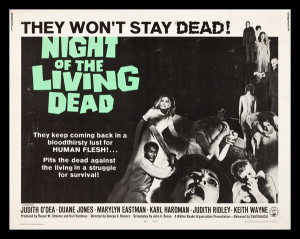 H.P. Lovecraft (1890 – 1937) was one of the first writers to depict zombies as the product of science rather than sorcery, and he was also one of the first to show their violent and predatory nature. His 1921 story, Herbert West – Reanimator, concerned a mad scientist who found a way to reanimate corpses. That story formed the basis of the 1985 movie Re-Animator (which is now on Netflix!). In the 1950’s, EC Comics like Tales from the Crypt also depicted zombies as dangerous predators. George Romero, the maker of 1968’s Night of the Living Dead, later cited the comics as an influence on his work.
H.P. Lovecraft (1890 – 1937) was one of the first writers to depict zombies as the product of science rather than sorcery, and he was also one of the first to show their violent and predatory nature. His 1921 story, Herbert West – Reanimator, concerned a mad scientist who found a way to reanimate corpses. That story formed the basis of the 1985 movie Re-Animator (which is now on Netflix!). In the 1950’s, EC Comics like Tales from the Crypt also depicted zombies as dangerous predators. George Romero, the maker of 1968’s Night of the Living Dead, later cited the comics as an influence on his work.
Night of the Living Dead, which spawned five sequels, is considered one most influential horror movies ever made. Reading comic books or even horror stories wasn’t considered acceptable once you were past a certain age in 1968, so Romero’s movie introduced the general public to the idea of predatory zombies. Night of the Living Dead also spelled out the rules governing such creatures.
In Night of the Living Dead, zombies hunted in packs and fed on human flesh. Like vampires, they could turn people into zombies by biting them. The only way to truly destroy a zombie was to decapitate it. In Romero’s movies, the zombies represented the forces of destructive and unthinking conformity. (It’s probably not an accident that one of the sequels, Dawn of the Dead, depicted zombies attacking a Wisconsin shopping mall.) In a documentary, Romero said that Night expressed his anger over the failures of the 1960s. Those failures apparently included the persistence of racism, and Romero took the radical step of having a black hero at the center of Night of the Living Dead.
From Night of the Living Dead on, zombies have been portrayed as the cause or result of a complete breakdown of society. In 28 Days Later, which was made shortly after the terrorist attacks of 9/11, the zombies were the victims of a plague. While not actually undead, they were mindlessly aggressive and they could easily infect other people. While individually far less powerful than a vampire or werewolf, zombies are significantly more dangerous, largely because of their sheer numbers. Even Count Dracula, based on the very real Vlad the Impaler, can only attack one person at a time; a large enough group of zombies can devastate a town, or even a country. Even a zombie’s mindlessness can be considered a danger, since it makes it impossible to bargain or reason with them. Zombies are also utterly remorseless and will attack anybody, while a vampire or werewolf might be willing to spare someone.
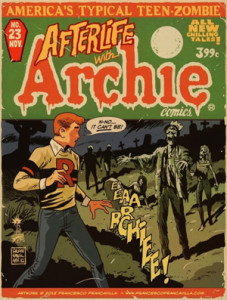 Zombies frequently appear in post-apocalyptic stories like The Walking Dead or the comic Afterlife with Archie in which the zombies destroy Riverdale. Such stories have their own strong appeal. The creator of Walking Dead, Robert Kirkman, once told an interviewer that post-apocalyptic stories enable people to imagine how they would respond in a crisis. The Walking Dead shows some people reinventing themselves into better and more capable human beings. A timid domestic abuse survivor and fan favorite, Carol Peletier, discovers that she can defend herself after all.
Zombies frequently appear in post-apocalyptic stories like The Walking Dead or the comic Afterlife with Archie in which the zombies destroy Riverdale. Such stories have their own strong appeal. The creator of Walking Dead, Robert Kirkman, once told an interviewer that post-apocalyptic stories enable people to imagine how they would respond in a crisis. The Walking Dead shows some people reinventing themselves into better and more capable human beings. A timid domestic abuse survivor and fan favorite, Carol Peletier, discovers that she can defend herself after all.
On the one hand, a zombie apocalypse story presents people battling a horde of mindless and remorseless monsters. It also depicts the survivors becoming better people during the course of their ordeal. The zombie apocalypse depicts the fall of an imperfect or corrupt system, and it then shows the survivors trying to build a better society. However, on the other hand, there are always those who fall victim to their own selfishness – and (sometimes) with good reason. After all, when disaster strikes, it’s human instinct to only look out for yourself. One such example comes in the form of the Governor in The Walking Dead who craves control and power in a town of survivors when in pre-apocalypse days, he was once a simple office worker.
 Although there are many depictions in film and television of survivors becoming worse people than they once were, the focus is almost always centered on the good. Practically all zombie apocalypse stories stress the necessity of the survivors working and staying together. They show people trying to remake themselves and their communities with varying degrees of success. If the zombie apocalypse ever does happen, let’s hope it’s a bit more like the heartfelt Warm Bodies, than the gory and terrifying Walking Dead (click here for showtimes), and its spin-offs.
Although there are many depictions in film and television of survivors becoming worse people than they once were, the focus is almost always centered on the good. Practically all zombie apocalypse stories stress the necessity of the survivors working and staying together. They show people trying to remake themselves and their communities with varying degrees of success. If the zombie apocalypse ever does happen, let’s hope it’s a bit more like the heartfelt Warm Bodies, than the gory and terrifying Walking Dead (click here for showtimes), and its spin-offs.


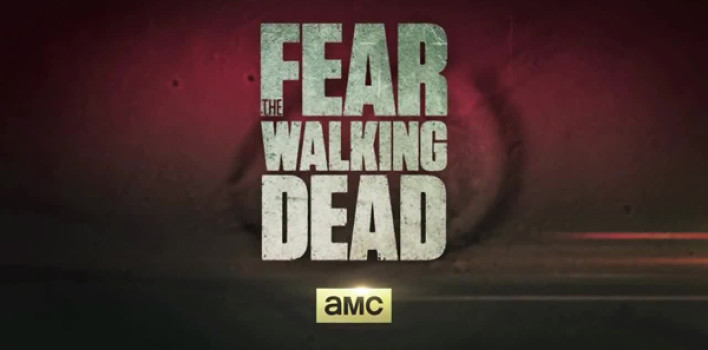
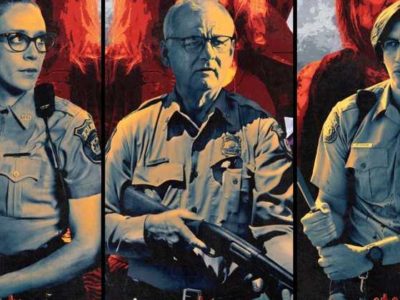
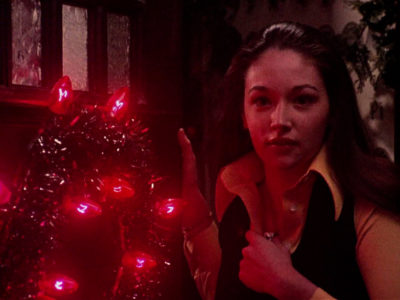
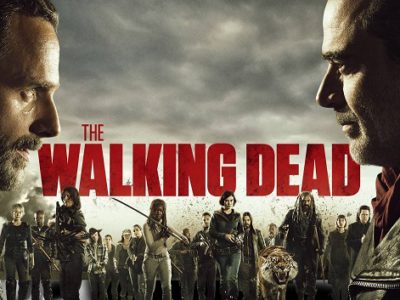


Pingback: Top 5 Zombie Movies | Reel World Theology